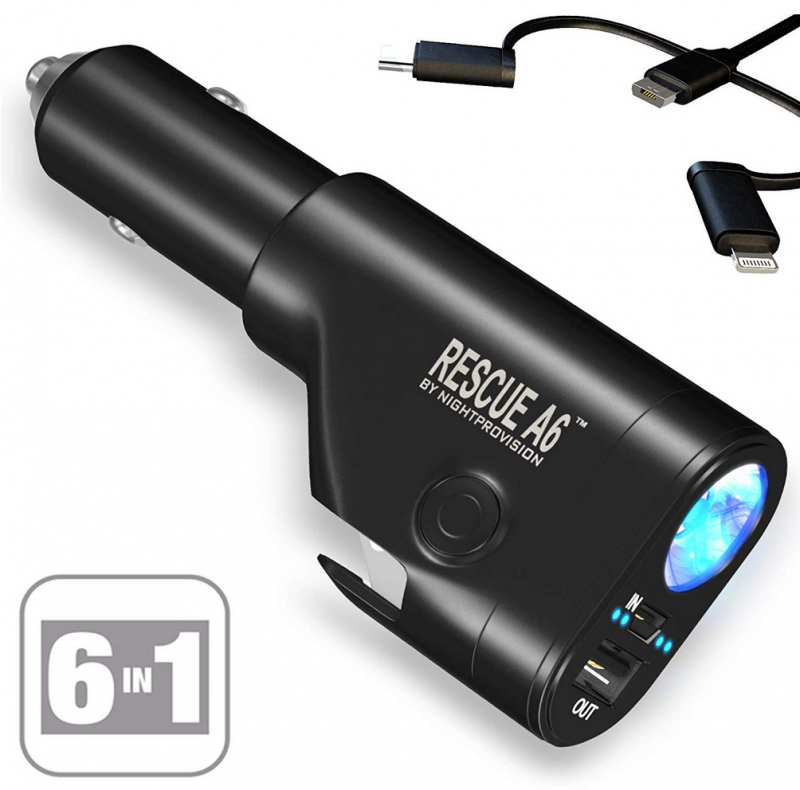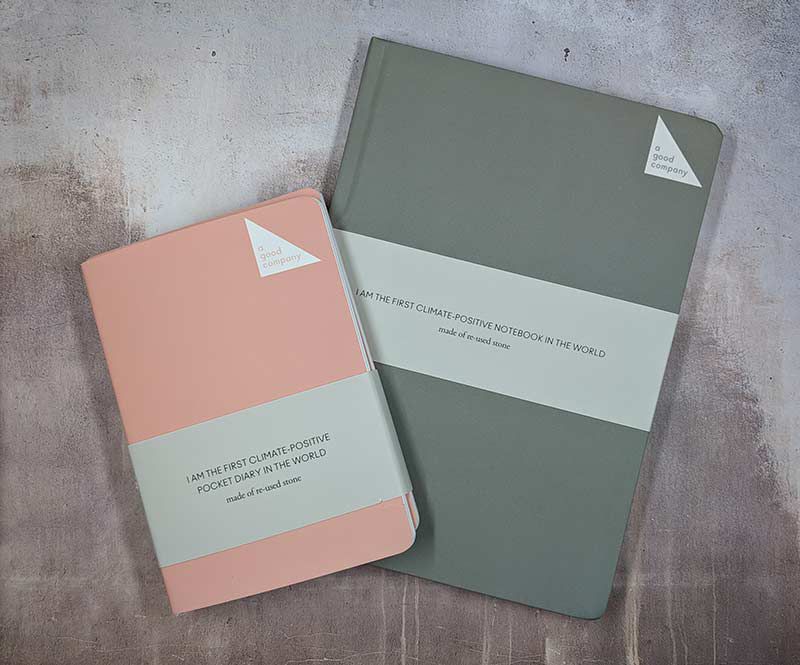
REVIEW – I’m a tree hugger. I recycle and feel sad when I see pictures of forests being clear cut. At the same time, I prefer writing a journal and my to-do lists in a notebook using a favorite pen vs. typing into an app on my smartphone. I realize that wood pulp from trees was used to make the paper for my favorite notebooks but I still use them. However, I’m open to trying alternatives to paper and today I’m going to talk about notebooks that have paper that is made from recycled stone. Nope, not kidding. Let’s check them out.
What is it?
A Good Company is located in Estonia and makes notebooks that are made of a paper-like material from stone. They use a dry process that uses no wood pulp, chemicals or water. The stone comes from the leftover limestone and marble from local construction company operations. Calcium carbonate powder from the crushed stone is mixed with recycled non-toxic high-density polyethene to form pellets which are then squeezed into a paper-like material.
Design and features
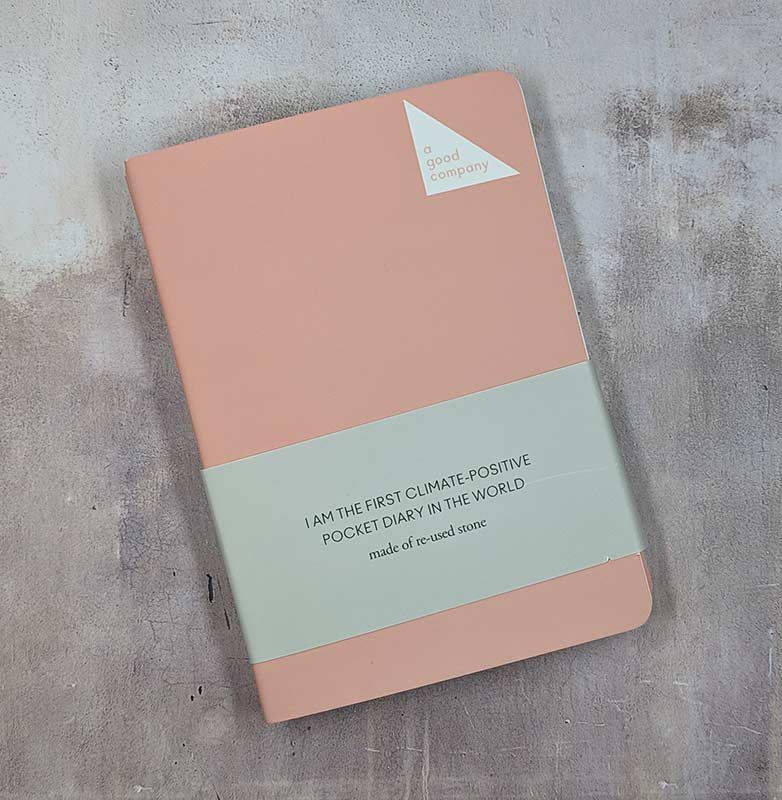
A Good Company offers their notebooks in a A6 pocket size, an A5 size and an A4 size sketchbook. I’ll be taking a look at the pocket diary and A5 sized notebook. The Pocket Diary is available in 3 packs in 6 colors including the dusty pink version that was sent to me.
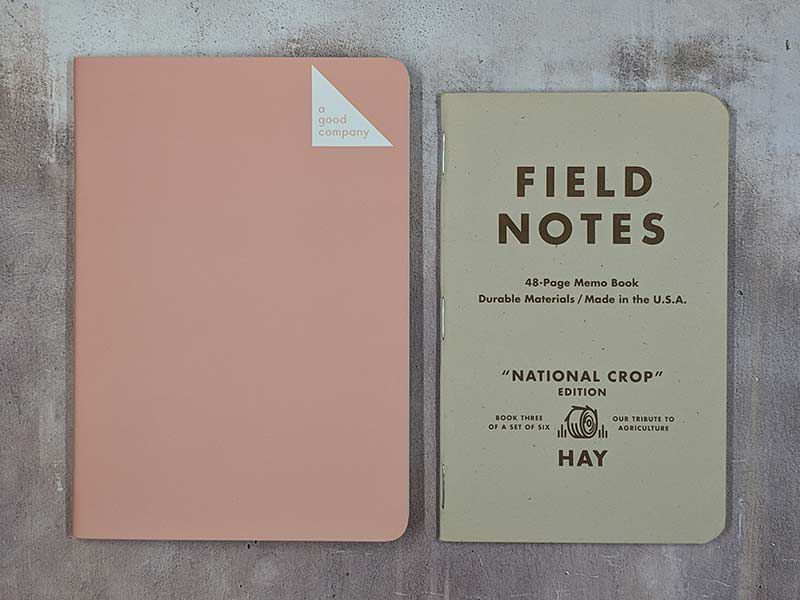
When most people think of a pocket notebook, the first brand that comes to mind is Field Notes. As you can see, the A Good Company notebook is slightly larger than a Field Notes notebook. That means if you like to use a cover for your pocket-sized notebook, you’ll need one made specially to fit the larger Pocket Diary.

Each Pocket Diary notebook has 144 pages.
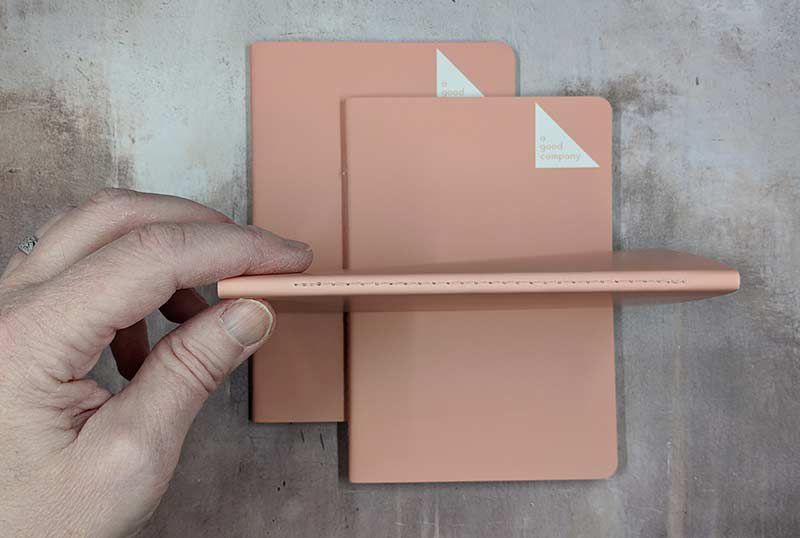
The notebooks have a stitched binding with a thread color that matches the notebook’s cover.
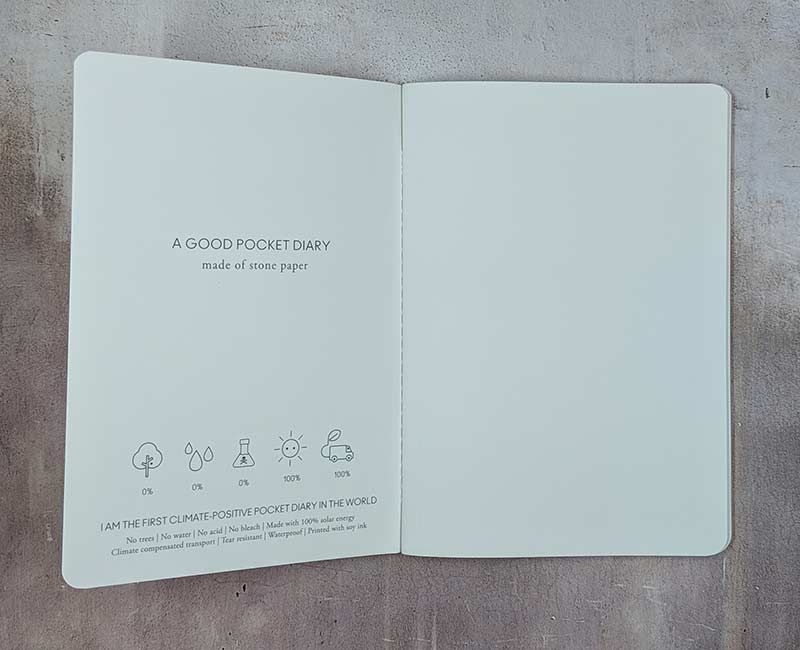
This notebook is only available with blank pages.
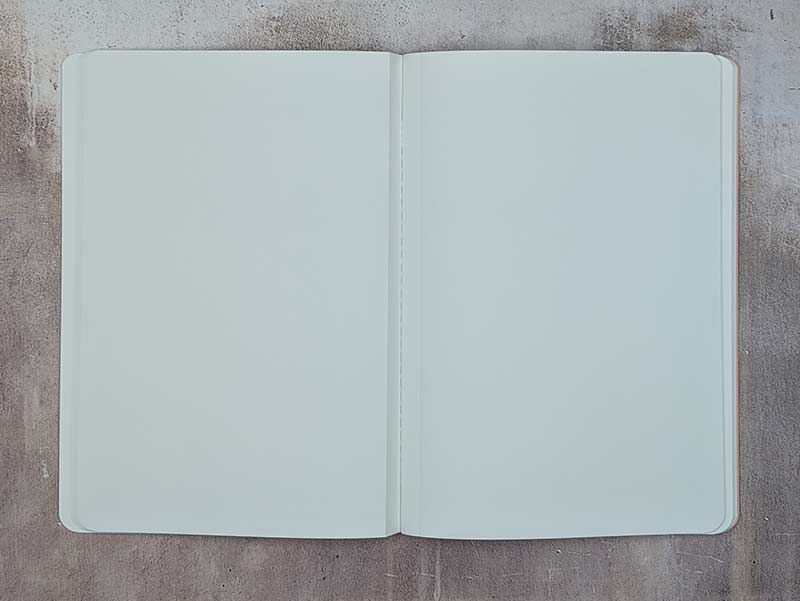
One of my must-have features in any notebook (even pocket-sized notebooks) is the ability for them to lay completely flat when open. I’m happy to say that these notebooks pass that test.
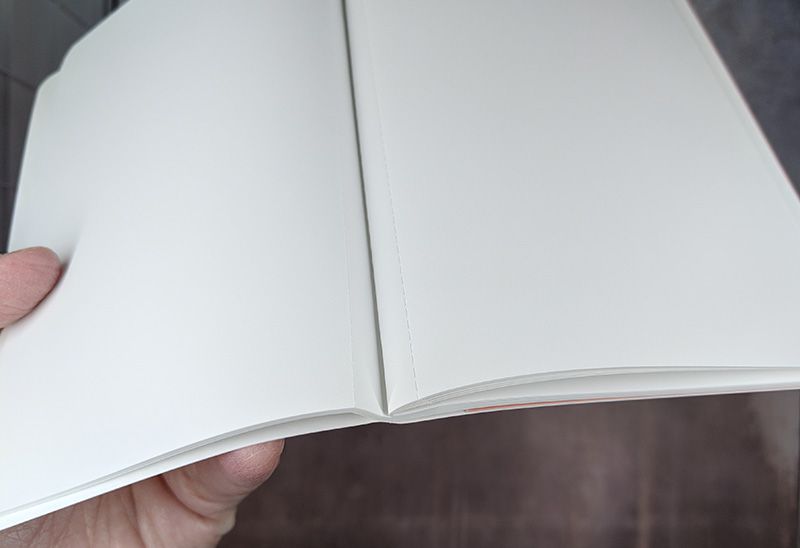
Each page is perforated for easy removal.
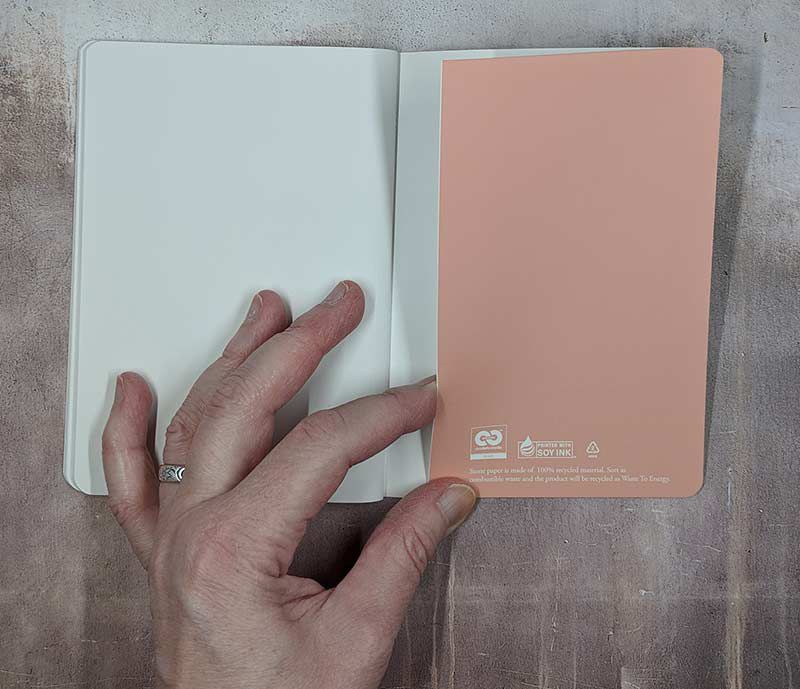
The back cover has an open-topped folder style pocket that you can use to hold small papers, receipts, etc.
The first thing that I noticed about the notebooks was that the cover and pages felt different than traditional paper. They felt soft and every so slightly rubbery.
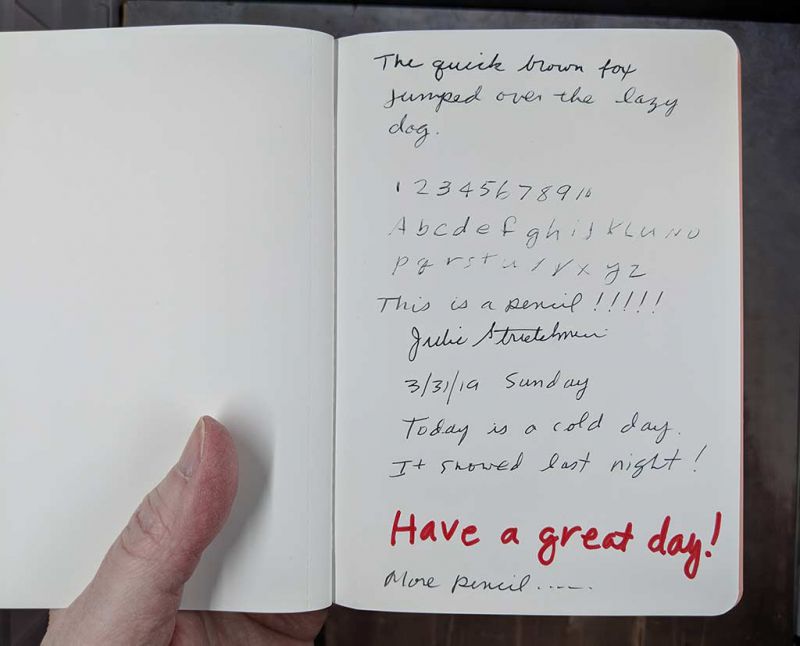
You can’t review a notebook without writing in it, so I did so with one of my Big Idea Design Ti Arto with a Pilot G2 refill. The first few words (at the top of the page) came out fine but as I continued to write (numbers and letters), it seemed that the pen was running out of ink and it felt like I was writing on a sheet of rubber because the pen’s tip felt like it was dragging.
I switched to a mechanical pencil and that felt and wrote better as did a Sharpie market. But switching to any fine point pen just didn’t feel or write right.
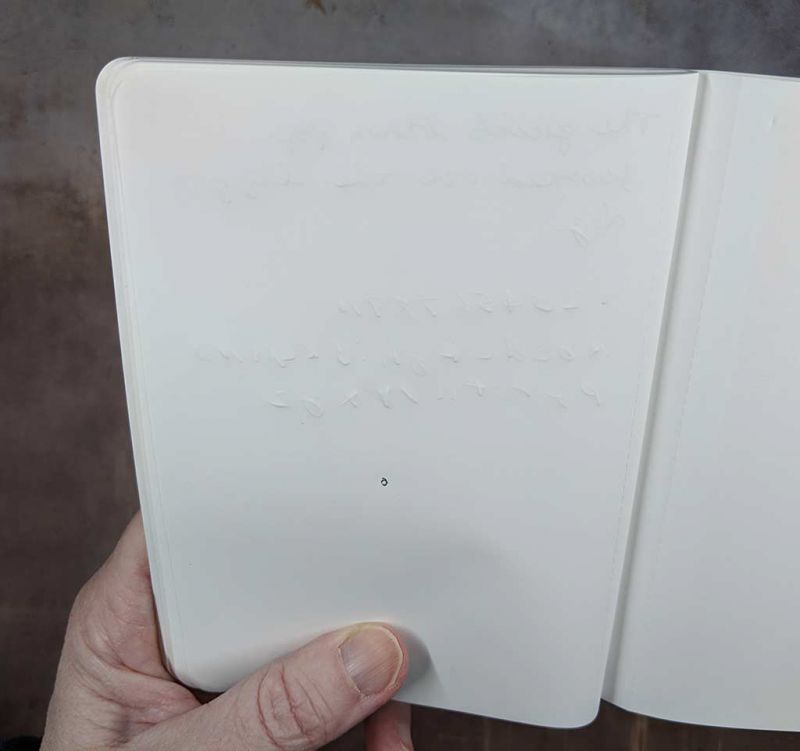
I didn’t notice any ink bleed through on the other side of the paper (that one ink dot was put there on purpose to help me focus on the page) but as you can see the impressions from the writing do “bleed” through.
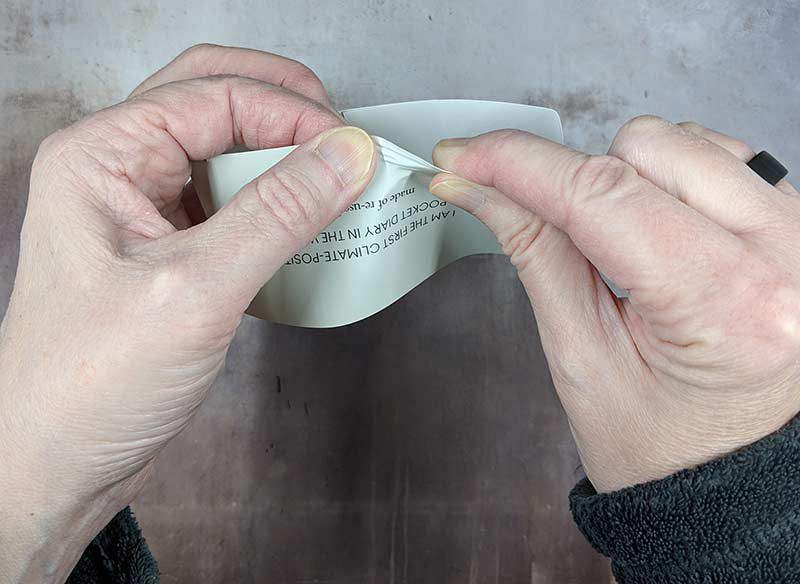
The “paper” doesn’t even rip like wood pulp paper. It stretches…
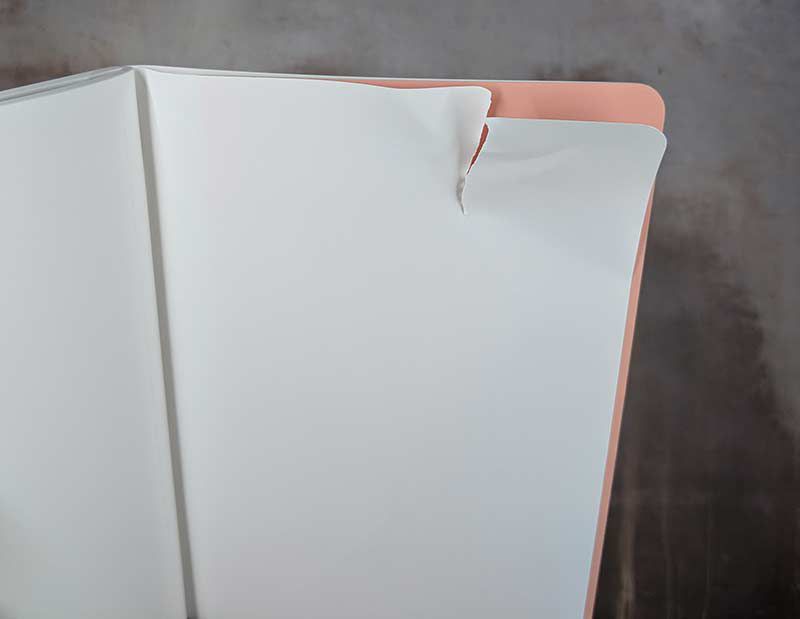
Until it breaks instead of tears.
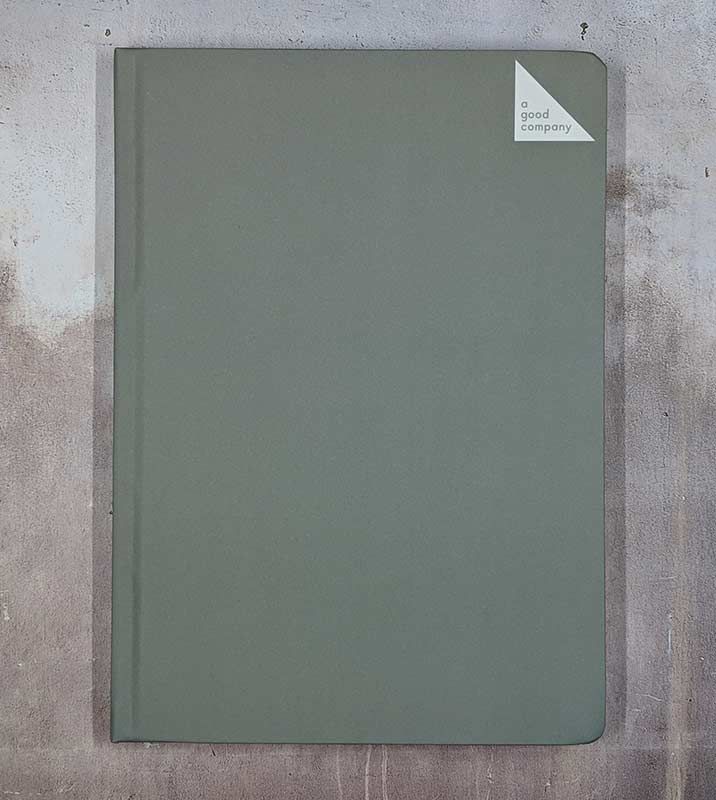
The A5 sized notebooks have a hardcover and are available in the same 6 colors as the Pocket Diary.
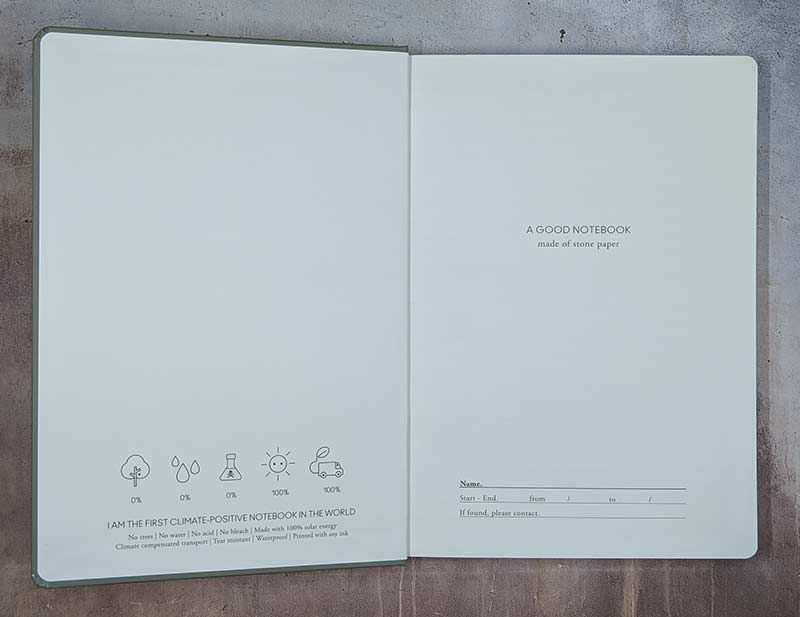
The first sheet has a block to write your name and other info.
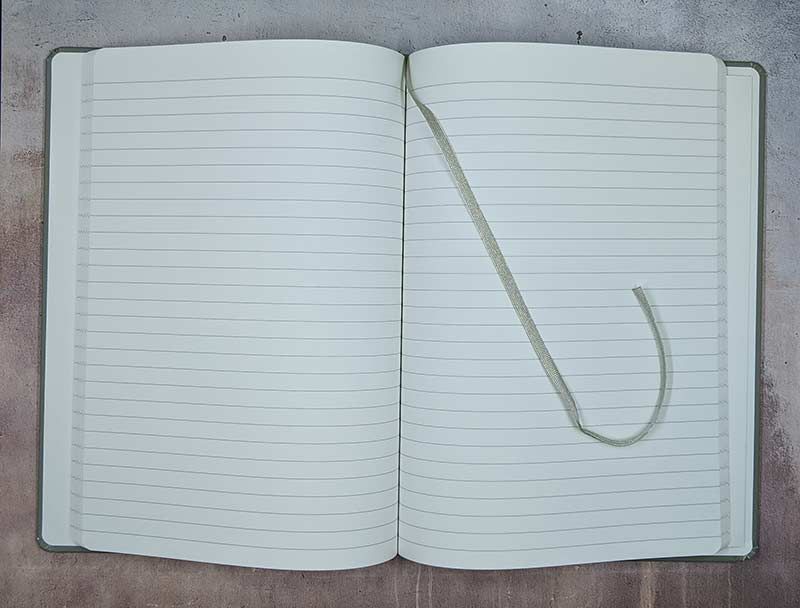
The A5 sized notebooks are available with lined pages, dotted pages, and blank pages. As you can see, I was sent the lined version. You can also see that the notebook has a ribbon bookmark.
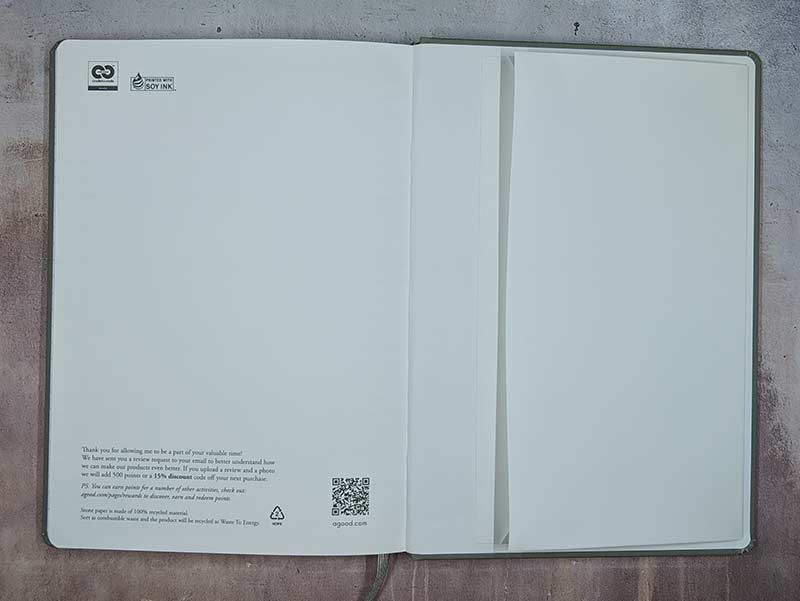
On the back cover is a pocket to hold small papers.

Each notebook has 144 pages and is bound in a way that allows the notebook to lay flat when open no matter what page you’re on.
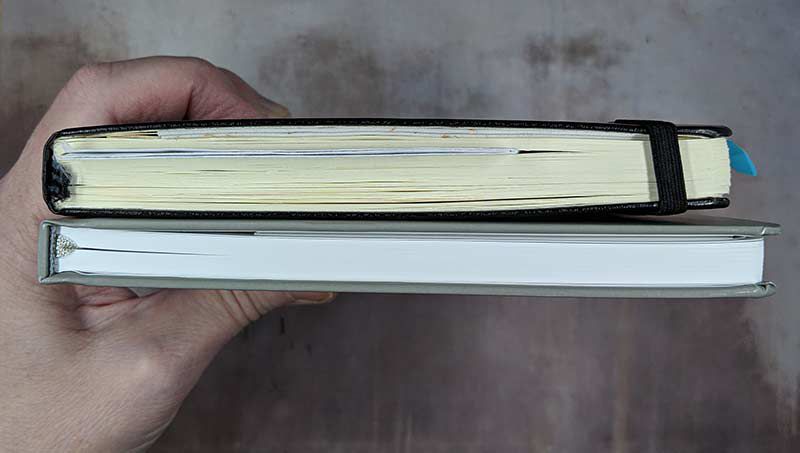
I was confused by the fact that the notebook is listed as being A5 sized when it’s wider than my Leuchtturm 1917 notebook which is also A5 sized.
I had the same experience writing in the larger notebook as I did with the pocket diary as they both have the same type of paper.
What I like
- Made of recycled products
What needs to be improved
- Writing experience with fine-tipped pens is not good
- Expensive
Final thoughts
I wanted to like these notebooks, but writing in them with my favorite pens felt like I was writing on a sheet of rubber. Also, even with free worldwide shipping, these notebooks are incredibly expensive. I love that A Good Company is using recycled materials for their products, but unless money is no object and you don’t mind writing with a pencil or marker, they are not a notebook that I would be able to call my favorite.
Price: A5 sized notebook €29 ($32.49), A6 sized pocket diary €37 ($41.45)
Where to buy: A Good Company
Source: The sample for this review was provided by A Good Company.
Filed in categories: Reviews
Tagged: Notebooks
A Good Company recycled stone notebooks review originally appeared on The Gadgeteer on April 2, 2019 at 1:00 pm.
Note: If you are subscribed to this feed through FeedBurner, please switch to our native feed URL http://the-gadgeteer.com/feed/ in order to ensure continuous delivery.






















